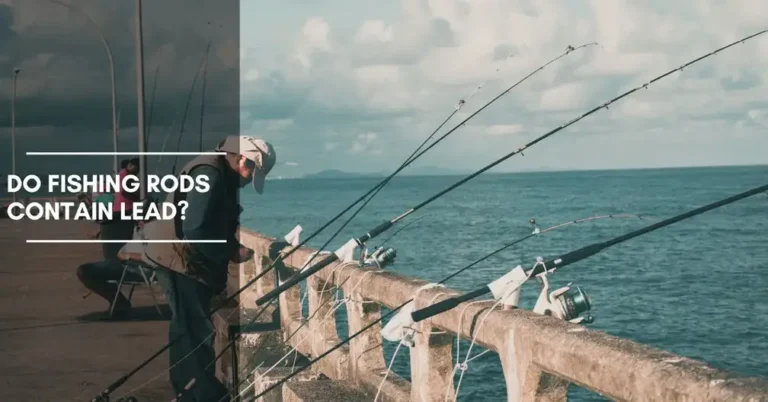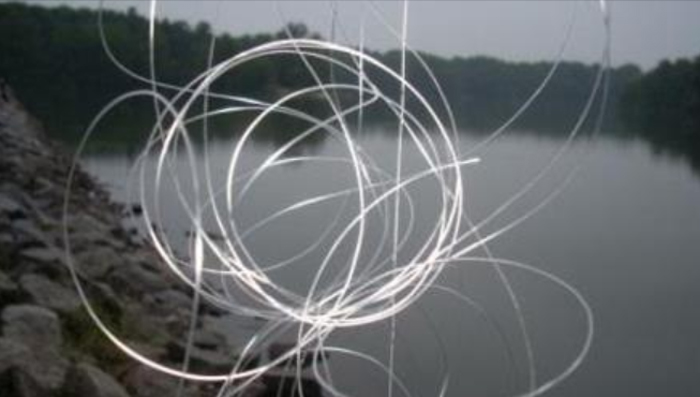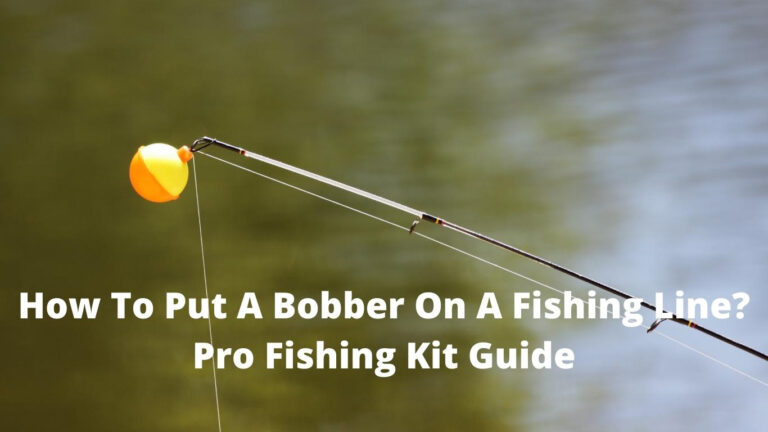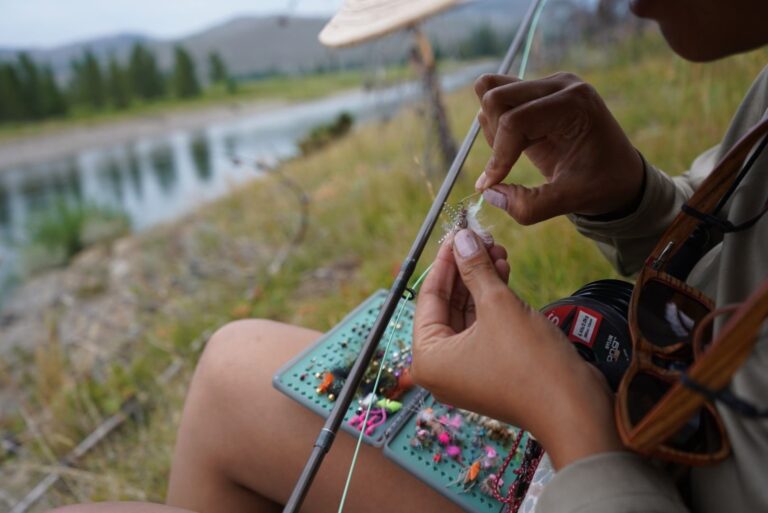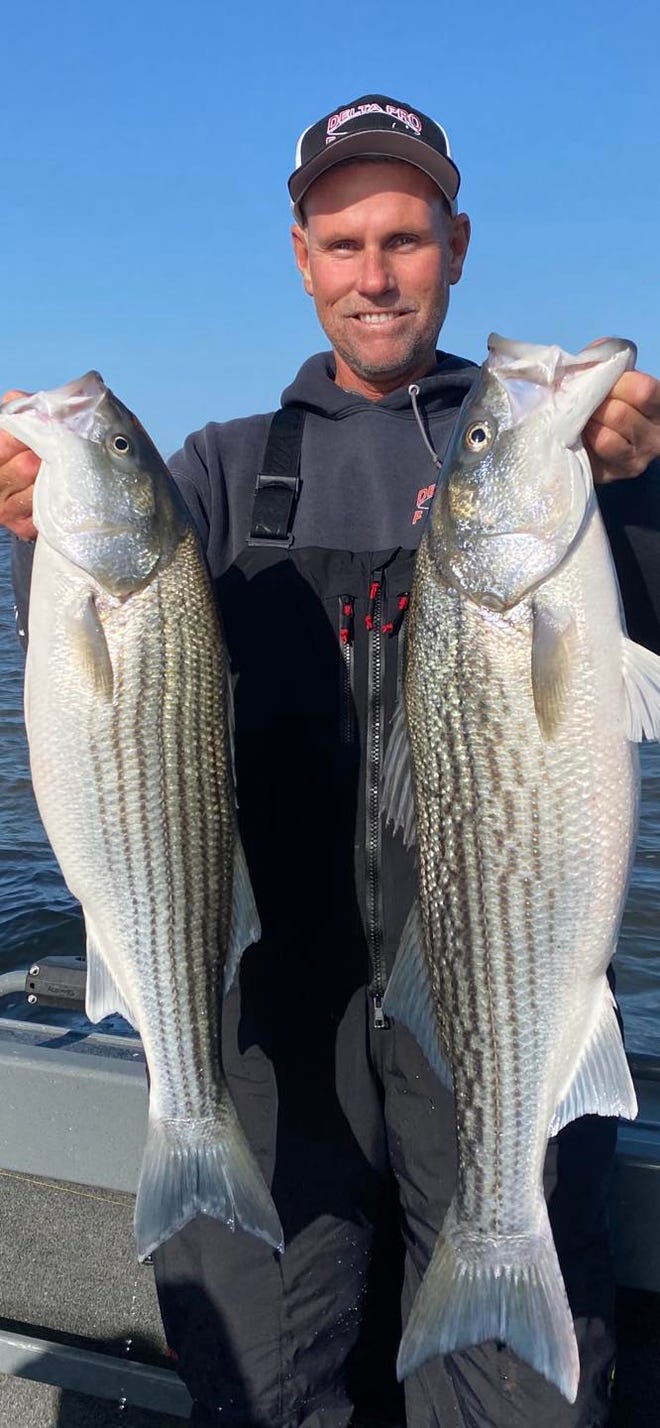For women going deep sea fishing, it is recommended to dress in comfortable, weather-appropriate clothing and appropriate footwear.

Credit: www.glamour.com
Essential Clothing For Deep Sea Fishing
Deep sea fishing can be an exciting and adventurous experience for women. As you prepare to embark on your deep sea fishing trip, it’s important to select the right clothing to ensure a comfortable and enjoyable outing. In this section, we will explore the essential clothing options for deep sea fishing and provide useful tips to help you make the best choices.
Choosing Moisture-Wicking Fabrics For Comfort
- Opt for clothing made from moisture-wicking fabrics to keep you dry and comfortable throughout your deep sea fishing expedition.
- These fabrics have the ability to wick away moisture from your skin, preventing sweat from accumulating and causing discomfort.
- Look for materials such as polyester or nylon blends that offer superior moisture-wicking properties.
- Moisture-wicking clothing not only keeps you dry, but it also helps regulate your body temperature, preventing overheating or chilling during your fishing trip.
- Additionally, these fabrics dry quickly, which is especially beneficial if you get wet or encounter rainy weather during your deep sea fishing adventure.
Sun Protection With Upf Clothing And Wide-Brimmed Hats
- Shielding yourself from the sun’s harmful rays is crucial while deep sea fishing. Opt for clothing with upf (ultraviolet protection factor) to protect your skin from the sun’s damaging effects.
- Look for clothing specifically designed with built-in upf, which provides greater sun protection than regular clothing.
- Long-sleeved shirts or rash guards with upf are an excellent choice, as they cover a larger surface area and protect your arms and shoulders from the sun.
- Don’t forget to wear wide-brimmed hats to shield your face, neck, and ears from direct sunlight. A hat with a chin strap will help keep it secure in windy conditions.
- Sunglasses with uv protection are also essential to protect your eyes from the bright sunlight reflecting off the water.
Layering Options For Fluctuating Temperatures
- Deep sea fishing conditions can vary, so it’s important to be prepared for fluctuating temperatures throughout the day.
- Layering your clothing allows you to adjust your comfort level as needed. Start with a moisture-wicking base layer to manage sweat and keep your body dry.
- Depending on the weather, add a mid-layer such as a lightweight fleece or a long-sleeved shirt for insulation and warmth.
- Finally, top it off with a waterproof and windproof outer layer to protect yourself from spray, rain, and wind.
- Wearing multiple layers also allows you to remove or add clothing as temperatures change, ensuring your comfort and enjoyment on the water.
Remember, dressing appropriately for a deep sea fishing trip is essential for your comfort and protection. By choosing moisture-wicking fabrics, sun-protective clothing, and layering options, you’ll be well-prepared to tackle any conditions and make the most of your deep sea fishing adventure.
Stay comfortable, protected, and ready to reel in that big catch!
Must-Have Accessories
Deep sea fishing is a thrilling and adventurous activity that requires the right apparel and accessories to ensure a comfortable and successful experience. While choosing the appropriate clothing is crucial, it is equally important to consider the must-have accessories that can enhance your deep sea fishing excursion.
In this section, we will explore the essential accessories that every woman should have when heading out for a deep sea fishing adventure.
Polarized Sunglasses For Glare Reduction
Glare from the sun reflecting off the water can be quite intense when you are out on the open sea. This can strain your eyes and make it difficult to spot fish or navigate your surroundings. To combat this, it is essential to invest in a good pair of polarized sunglasses.
Here are some key points to consider:
- Polarized sunglasses effectively reduce glare, allowing you to see more clearly and comfortably.
- They enhance visibility by minimizing reflections and glare, enabling you to focus on spotting fish and enjoying the stunning ocean view.
- Look for sunglasses with high-quality lenses that offer both uv protection and polarization for the best results.
- Choose a comfortable and secure fitting pair that will stay in place even during more active movements on the boat.
- Ensure that the sunglasses provide excellent peripheral vision to maintain awareness of your surroundings.
Sturdy And Comfortable Footwear For Traction On Slippery Surfaces
As you embark on a deep sea fishing adventure, you will encounter various slippery surfaces, including wet decks and fish guts. Therefore, it is crucial to wear appropriate footwear that offers stability and traction. Here are some essential points to consider:
- Opt for sturdy and waterproof footwear that can protect your feet from water, fish, and other elements associated with fishing.
- Look for shoes or boots with non-slip soles to ensure good traction on wet or slippery surfaces.
- Consider footwear that offers ankle support to prevent injuries during any sudden movements or rough waters.
- Choose a comfortable pair of shoes that are suitable for prolonged periods of standing or walking.
Waterproof And Durable Watches For Time And Depth Monitoring
While out at sea, it is essential to keep track of time and monitor the depth of water to ensure a safe and successful fishing experience. Investing in a waterproof and durable watch designed specifically for deep sea fishing can be beneficial.
Here are some key points to consider:
- Look for watches that are specifically designed for water activities and are capable of withstanding high pressures and depths.
- Ensure that the watch is waterproof and has sufficient resistance to saltwater to prevent any damage.
- Features such as depth gauges, timers, and compass functionality can be extremely valuable while out on the water.
- Choose a watch with a clear and easy-to-read display, even in bright sunlight or low light conditions.
- Prioritize durability and reliability to ensure that your watch can withstand the rigors of deep sea fishing.
By incorporating these must-have accessories into your deep sea fishing attire, you can enhance your comfort, safety, and overall enjoyment of the experience. Polarized sunglasses, sturdy footwear, and a waterproof watch will not only protect you from the elements but also assist you in spotting fish, maintaining stability, and keeping track of time and depth.
So, make sure to equip yourself with these essentials before you embark on your next deep sea fishing adventure.
Stylish Outfits For Deep Sea Fishing
When it comes to deep sea fishing, it’s not just about landing the big catch, but also about looking stylish while doing it. After all, who says you can’t be fashionable and practical at the same time? Here are some tips on choosing the perfect outfit for your deep sea fishing adventure:
Choosing Bright-Colored Or Patterned Tops For Visibility And Style
- Opt for bright-colored tops to enhance your visibility on the open sea. This can be particularly important in case of emergencies or if you accidentally fall overboard. Stand out from the vast blue ocean by wearing hues like neon yellow, vibrant orange or electric pink.
- Patterned tops are not only visually appealing, but they can also help to camouflage stains or fish scales that may get on your clothes during the fishing action. Choose from a range of patterns such as stripes, polka dots, or even fish-inspired prints for a fun and fashionable twist.
Slim-Fit Or Quick-Dry Bottoms For Ease Of Movement
- Slim-fit bottoms like leggings or fitted shorts are ideal for deep sea fishing. They allow for a full range of motion and prevent any fabric from getting tangled in the fishing equipment. Plus, they provide a sleek and stylish look for your fishing adventure.
- Quick-dry bottoms are essential when you’re out on the water for extended periods. The last thing you want is to be uncomfortable in wet, clingy pants. Opt for materials like nylon or polyester that dry quickly and wick away moisture, keeping you cool and dry throughout your fishing excursion.
Stylish And Practical Swimwear Options For Fishing Breaks
- Having a stylish swimsuit on hand is essential for those fishing breaks when you want to take a refreshing dip in the sea. Look for swimwear that combines fashion and functionality, such as one-piece swimsuits with built-in uv protection or rash guards to protect your skin from the sun’s harmful rays.
- If you prefer a two-piece swimsuit, choose one with secure straps and a supportive top to ensure it stays in place during any action-packed fishing moments. Pair it with a cover-up or a sarong for a chic and effortless look when you’re not in the water.
Remember, your deep sea fishing outfit should prioritize comfort, practicality, and style. With the right choices, you can look fabulous while reeling in your next big catch. So, go ahead, make a fashionable splash on the high seas!
Dressing For Safety
When it comes to deep sea fishing, safety should always be a top priority. Dressing appropriately for your fishing adventure is essential to ensure a safe and enjoyable experience. Here are some key points to remember when considering what to wear:
Wearing A Life Jacket Or Personal Floatation Device (Pfd):
- Always wear a properly fitted life jacket or pfd when out on the water.
- Ensure that the life jacket or pfd is approved by the u.s. coast guard and in good condition.
- Adjust the straps to ensure a snug and secure fit.
- Regularly check the buoyancy of the life jacket or pfd to ensure it is working properly.
Avoiding Loose Clothing And Jewelry That Can Get Caught In Equipment:
- Opt for comfortable and well-fitting clothing that does not have any loose ends or hanging accessories.
- Avoid wearing long scarves, loose shirts, or flowing sleeves that can get tangled in fishing equipment.
- Remove or secure any jewelry that could easily catch on fishing lines or gear.
- Dress in layers to accommodate changing weather conditions without compromising your safety.
Incorporating High-Visibility Elements For Emergencies:
- Choose clothing in bright, high-visibility colors such as neon yellow or orange.
- Opt for fishing jackets or vests that have reflective tape or patches for increased visibility.
- Consider wearing a hat with a bright color or reflective tape for easy spotting in the water.
- Stash a whistle or other signaling device in your clothing or gear for emergencies.
By following these guidelines, you can ensure that you are properly dressed for safety while deep sea fishing. Remember, your attire should not only be comfortable but also serve to protect you in case of emergencies. As the saying goes, it’s better to be safe than sorry!
Packing Tips For Deep Sea Fishing Trips
Heading out on a deep sea fishing trip can be an exhilarating adventure, but it’s important to be prepared. When it comes to packing for your trip, there are a few key things to keep in mind to ensure you have everything you need.
Here are some essential tips for packing for a deep sea fishing trip:
Packing Lightweight And Breathable Clothes For Easy Travel:
- Opt for lightweight, moisture-wicking fabrics such as nylon or polyester. These materials will keep you cool and dry, even in the heat of the sun or during intense bouts of fishing.
- Pack a few long-sleeved shirts and pants to protect yourself from the sun and pesky insects. Look for clothing with upf (ultraviolet protection factor) to shield your skin from harmful uv rays.
- Don’t forget to bring a hat with a brim and a neck gaiter or buff to protect your face and neck from the sun’s rays.
- Comfortable, closed-toe shoes with a non-slip sole are a must. Make sure they are water-resistant or bring an extra pair in case they get wet.
Bringing Extra Layers For Unexpected Weather Changes:
- Weather conditions out at sea can change rapidly, so it’s important to be prepared for anything. Pack a lightweight jacket or windbreaker to shield yourself from gusty winds or unexpected rain showers.
- Layering is key to adapt to changing temperatures. Bring a few thin sweaters or fleeces that can easily be added or removed as needed.
- Don’t forget to bring a pair of waterproof pants or rain gear in case of heavy rain or waves splashing onto the boat.
Including A Dry Bag For Protecting Valuables From Water Exposure:
- Invest in a high-quality dry bag to keep your valuables safe and dry during your deep sea fishing trip. This is particularly important if you plan on bringing electronics such as cameras or smartphones.
- Choose a dry bag with a roll-top closure to ensure a tight seal and keep water out.
- Place your valuables in waterproof cases or pouches within the dry bag for extra protection.
- Securely attach the dry bag to the boat or to yourself using a carabiner or strap to prevent it from falling overboard.
Remember, the key to a successful deep sea fishing trip is being prepared. By packing lightweight and breathable clothes, bringing extra layers for unexpected weather changes, and including a dry bag for protecting valuables from water exposure, you can enjoy your adventure without any worries.
So get out there, cast your line, and enjoy the thrill of reeling in the big catch!
Maintenance And Care Of Fishing Outfits
Preparing for a deep sea fishing adventure requires more than just choosing the right outfit. It also includes taking care of your fishing apparel to ensure its longevity. From washing and drying tips to proper storage techniques, here are some essential maintenance and care practices for your fishing outfits and gear.
Washing And Drying Tips For Saltwater Exposure:
- Rinse your fishing clothes thoroughly with freshwater after every fishing trip to remove any salt or residue. Saltwater can cause damage to fabrics and accessories if left untreated.
- Use a mild detergent or specialized fishing gear cleaner to wash your clothes. Avoid harsh chemicals that can degrade the fabric and compromise the integrity of your gear.
- Gently hand wash your fishing outfits, paying extra attention to stains, salt buildup, and odors. Delicate fabrics, such as fishing gloves or hats, may require spot cleaning rather than full immersion.
- Avoid using bleach or fabric softeners, as they can weaken the fibers and impact the functionality of waterproof or moisture-wicking materials.
- Air drying is the best method for drying your fishing clothes. Avoid using high heat or direct sunlight, as they can cause fading and shrinkage. Hang your garments or lay them flat on a clean surface to dry naturally.
Storing Clothing And Accessories To Prevent Mildew Or Mold:
- Before storing your fishing outfits, ensure they are completely dry. Damp or moist clothing can lead to mildew or mold growth, which can damage the fabric and create an unpleasant odor.
- Store your fishing apparel in a cool, dry, and well-ventilated area. Avoid storing them in damp basements or humid environments.
- Use breathable storage containers or garment bags to protect your clothing from dust and pests while allowing air circulation.
- Avoid folding or crushing delicate items, such as fishing hats or visors, that may lose their shape. Place them on top of other items instead of underneath heavy gear.
- Consider using moisture-absorbing products, such as silica gel packets or moisture absorbers, to maintain the ideal humidity level and prevent moisture-related damage.
Checking And Replacing Damaged Gear Before The Next Fishing Trip:
- Regularly inspect your fishing gear, including rods, reels, lines, and accessories, for signs of wear and tear. Look for fraying, rust, or loose parts that may affect their functionality.
- Check the condition of zippers, buttons, and closures on your fishing apparel. Replace any damaged or broken components to ensure a secure and comfortable fit.
- Inspect the integrity of waterproof and insulation features in your clothing. Make sure they are still effective in protecting you against the elements.
- Pay attention to any damage caused by saltwater exposure or rough handling. Saltwater can corrode metal components, degrade fabric, and weaken stitching.
- If you find any significant damage to your gear, consider repairing or replacing it before your next fishing trip. It’s better to be safe and well-equipped for an enjoyable and successful adventure.
By following these maintenance and care practices, you can extend the lifespan of your fishing outfits, ensure their optimal performance, and be prepared for many more exciting deep sea fishing experiences. Remember, taking care of your fishing gear is an investment in your comfort and fishing success.
Conclusion
To ensure a successful and comfortable deep sea fishing experience, it is essential for women to choose the right outfit. By following the tips and guidelines mentioned in this blog post, you can dress appropriately and enjoy your fishing adventure to the fullest.
Remember to prioritize comfort by opting for lightweight and breathable clothing, such as moisture-wicking shirts and quick-drying pants or shorts. Additionally, make sure to protect yourself from the sun’s harmful rays by wearing a wide-brimmed hat, polarized sunglasses, and applying sunscreen regularly.
Don’t forget to wear comfortable shoes with non-slip soles to maintain stability on the fishing boat. Lastly, consider bringing additional layers or waterproof clothing in case the weather conditions change. By putting thought into your outfit, you can enjoy a stress-free, comfortable, and successful deep sea fishing experience.

